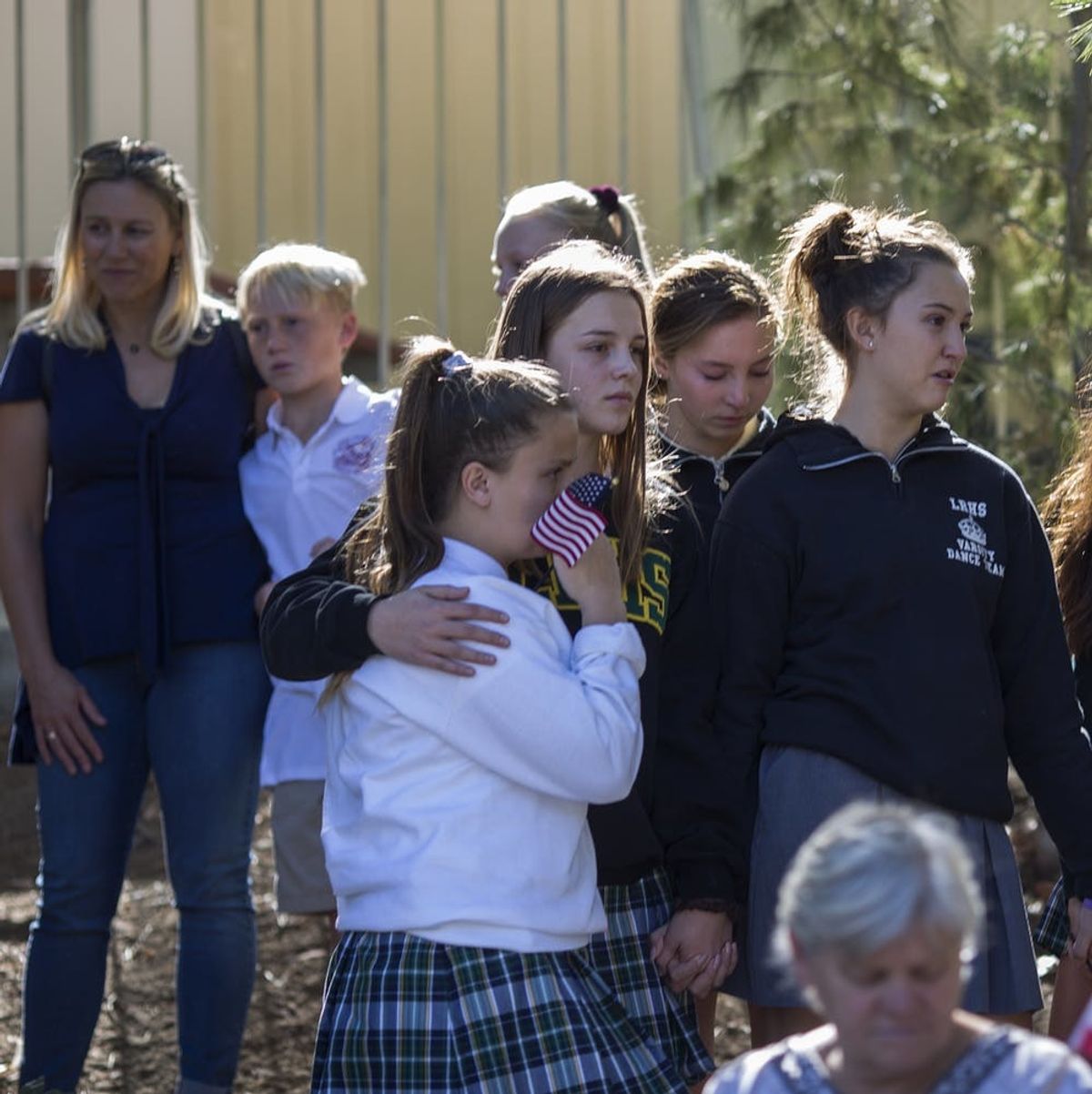With 12 Dead in California Bar Shooting, We Need to Talk About Terror

Many of us waking up on Thursday morning learned of yet another deadly attack on a public space in America, this time in a country western bar. At around 11:15pm local time, a gunman walked into the bar in Thousand Oaks, California, and opened fire. Twelve people, plus the gunman, are dead.
The New York Times reports that several of the people inside the Borderline Bar and Grill are survivors of last year’s shooting in Las Vegas that left 58 people dead. While the shooter’s motives remain unclear, one thing is certain: We must imbue the reality of gun violence in America with the weight and gravity that we do the threat of terrorism if we’re ever going to stop mass shootings.
Bay Area NBC affiliate NBC Bay has identified the killer as 28-year-old Ian David Long, a decorated Marine combat veteran. Long had served a machine gunner in Afghanistan — 17-year-long military involvement that has been at the epicenter of the United States’ so-called “war on terror” and helped shape the political meaning of “terror” itself.
Our definition of terrorism doesn’t typically include the form of violence enacted by Long in Thousand Oaks, though there’s been hearty debate as to whether it should.

Shortly after the Parkland, Florida shooting earlier this year, Uri Friedman attempted to explain how the federal government (and policing agencies) define terrorism, writing for The Atlantic, “Terrorism is typically directed or inspired by specific organizations that serially practice violence for political ends and that attack not just individuals but society.” But isn’t walking into a bar, a concert venue, or a school in order to shoot and kill people the same thing?
The semantics can be argued until the cows come home, but at the end of the day, no. The key difference is not what the word “terrorism” technically means, in dictionary terms, but what it has come to mean in practice. As Masha Gessen succinctly put it in The New Yorker after last year’s mass shooting in Las Vegas: “Terrorism — or, rather, the war on terrorism — is a defining force of American political reality, and has been for sixteen years.”
In the Journal of Military Veterans’ Health, a study concluded that the way we define terrorism affects not only social psyche, but how society responds to acts of violence. And while our government continues to finance costly wars to supposedly curtail the threat of terrorism, no action has been taken at the federal level to staunch the ongoing scourge of gun-related fatalities. Despite the fact that many, many more Americans die from shootings on US soil rather than terrorist acts, elected officials treat foreign terrorism as the greater menace.
This is not to downplay the very real atrocity of terrorism or minimize the human losses that terrorist acts have created. But in terms of sheer numbers, it’s important to recognize that terrorist violence is a relatively minor threat to Americans.
The Gun Violence Archive tracks data on shootings across the US year after year. In 2018 alone, there have been nearly 50,000 shootings resulting in over 12,000 deaths and 24,230 injuries. Of those shootings, 305 are considered “mass shootings,” meaning more than 10 people died. Meanwhile, American citizens killed in what we perceive to be terrorist attacks between 1995 and 2016 total around 3,600 deaths; 2,902 of those are the result of the 9/11 attacks. That’s less than one tenth of the people killed from gun violence and mass shootings this year alone.
Last week, CNN anchor Don Lemon was both praised and scorned after he declared, “The biggest terror threat in this country is white men.” He was drawing a contrast between what government agencies are attempting to scare people with (non-white refugees seeking asylum), versus what he said is the more real threat to average Americans’ safety: white men with guns.
“I keep trying to point out to people not to demonize any one group or any one ethnicity. But we keep thinking that the biggest terror threat is something else — some people who are marching towards the border like it’s imminent,” he said. “We have to stop demonizing people and realize the biggest terror threat in this country is white men, most of them radicalized to the right, and we have to start doing something about them. There is no travel ban on them. … So what do we do about that?”
Gun control advocates would likely say that the answer lies in tougher restrictions on firearms, and they wouldn’t necessarily be wrong. But first, we need to reevaluate what we’re afraid of.
With files from Kelli Korducki.
(Photo by David McNew/Getty Images)

















